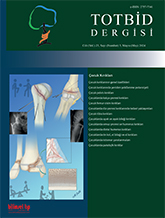
The primary distinction separating adult fractures from pediatric fractures is the capacity for remodeling. The primary factors contributing to the excess remodeling capacity in children are the activity of the epiphyses, thickness of the periosteal tissue, and abundance of elasticity and growth potential. In the Wolf`s law, one of the two biomechanically effective mechanisms in remodeling, occurring in the diaphysis, osteoblastic activity due to increased stress on the concave side and increased osteoclastic activity due to tension on the convex side play a significant role. In the Hueter-Volkmann law, which occurs in the epiphysis, remodeling is facilitated by less growth on the convex sides of the fracture line, at the distal and proximal growth plates, and more growth on the concave sides. The most significant factor affecting remodeling is age. Other main factors include proximity to the growth plate, the degree of angulation, and alignment adaptation to the nearby joint movement axis. Although children have a high remodeling capacity, appropriate treatment planning should be carried out, and the most accurate approach should be applied.